Solinst dataloggers are recording water levels in your monitoring well network, and it’s time to go out and collect your quarterly data – what options do you have for doing this?
Solinst offers four standard ways to retrieve Levelogger® and LevelVent data in the field, without removing them from their monitoring location. Let’s discuss each one.
1. Using Your Field Laptop and Solinst Levelogger Software
The first, and most standard method is to use a laptop with Levelogger Software installed.
To communicate using a laptop computer, you need a PC Interface Cable to connect to your Levelogger deployed on a Direct Read Cable, or you need an Optical Reader (Desktop Reader 5 or Field Reader 5), if you have installed your Levelogger using stainless steel wireline or Kevlar cord. A PC Interface Cable is used to connect a LevelVent Wellhead to a laptop.
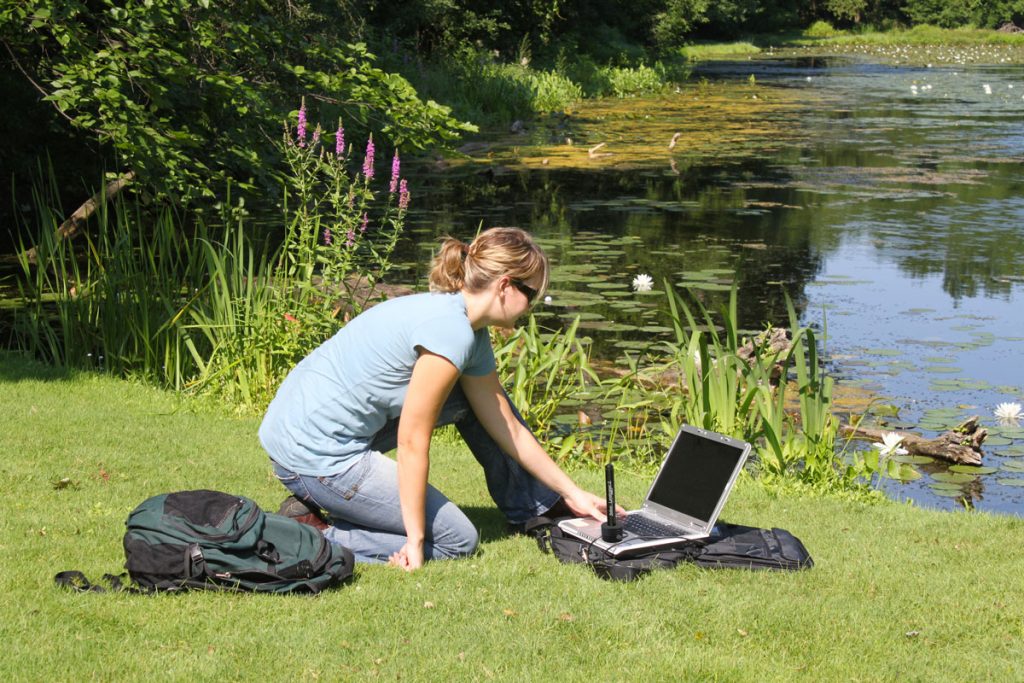
Downloading Levelogger Data Using an Optical Reader Connected to a Laptop with Levelogger Software.
The major advantage to using this method is having access to all of the features included with Levelogger Software. You have full programming capability. So after downloading, if needed, you can stop your dataloggers and reprogram them with a new sampling regime before you start them again. You can view and save real-time data files. You can also export data files to be used in other programs found right on the same laptop.
Levelogger Software includes the Data Wizard, so if you like, you can perform barometric compensation of your Levelogger data, and view true water level measurements even before going back to the office.
Two Useful Utilities in the Levelogger Software:
The first is the Diagnostics Utility. This utility can be used to check the functioning of the datalogger’s pressure transducer, temperature sensor, and it’s battery voltage. It also checks backup and logging memories, as well as enabling a complete Memory Dump, if required.
The second is the Firmware Upgrade Utility. Connect your laptop to the Internet and download any firmware update files before going to the field. You can use the utility to update any Leveloggers in the field, after you have downloaded the data. Before doing this, be sure to check out our compatibility document.
If you only need to download data while in the field, having the full suite of Levelogger Software features isn’t really an advantage; we have three more options…
2. Using Your Smartphone and the Solinst Levelogger App
The Levelogger 5 App Interface uses Bluetooth® wireless technology to connect your Solinst datalogger to your smart device running the Solinst Levelogger App.
How does this work?
Download the Solinst Levelogger App on your Apple® or Android™ smart device (it is free to download). Take your device and the Levelogger 5 App Interface with you into the field. The Levelogger 5 App Interface is a very compact piece of hardware, so it is easy to transport.
Connect the Levelogger 5 App Interface to the top end your Levelogger’s Direct Read Cable, or directly to the Levelogger using an Optical Adaptor. Connect directly to a LevelVent Wellhead.
Turn the Levelogger 5 App Interface on. Enable (turn on) Bluetooth on your smart device and pair it with the Levelogger 5 App Interface. Launch the Solinst Levelogger App and connect to your datalogger!
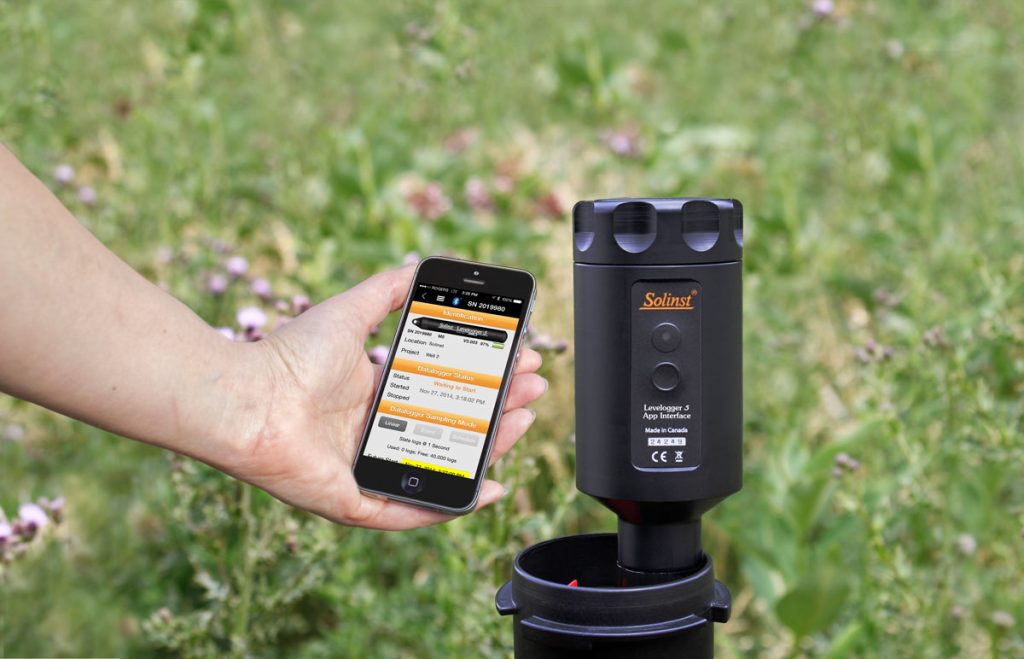
Downloading Levelogger Data Using an App Interface Connected to a Direct Read Cable.
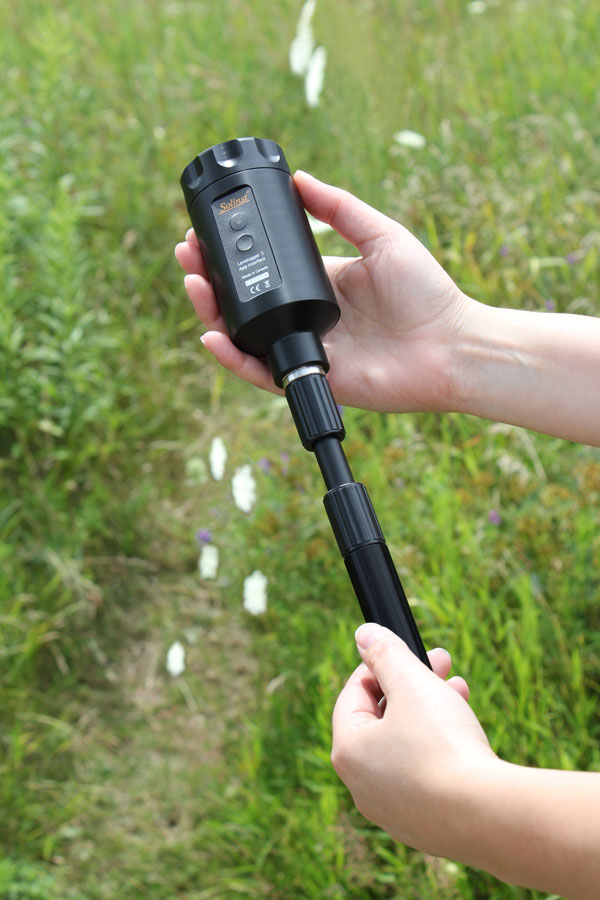
A Levelogger Connected to an App Interface Using a L5 Threaded Optical Adaptor.
Once connected, you have access to all of the programming and downloading features also found in the Levelogger PC Software. If enabled on your smart device, your Levelogger GPS location is also logged when your Levelogger data files are downloaded.
In the app, you can save up to 10 program settings that can be applied to Leveloggers once in the field. This can help standardize all Leveloggers across a project if you need to restart them with a new sampling regime. You can also view and save real-time data on your smart device.
The app does not include all the same Software Utilities or Data Wizard, however, a major advantage provided by the app, is the ability to view and then e-mail Levelogger data files right from your smart device.
(Note: the most recent version of the Solinst Levelogger App now includes a Diagnostic Utility).
The Solinst Levelogger App and Interface offers a convenient and efficient option for communicating with your dataloggers in the field.
However, if you still just want to download your data we have some simpler options yet…
3. Using the Durable Solinst Readout Unit (SRU)
The Solinst Readout Unit (SRU)‘s rugged housing with inbuilt LCD display offers instant water level readings from a deployed Solinst datalogger, and allows you to view and save real-time logging sessions.
The SRU connects to a Levelogger’s Direct Read Cable or a LevelVent Wellhead.
What sets the SRU apart from the other devices is its internal barometer. The barometer provides real-time water level readings that are automatically barometrically compensated.
Real-time readings are independent of the programmed logging session and will not interfere with the internal data set.
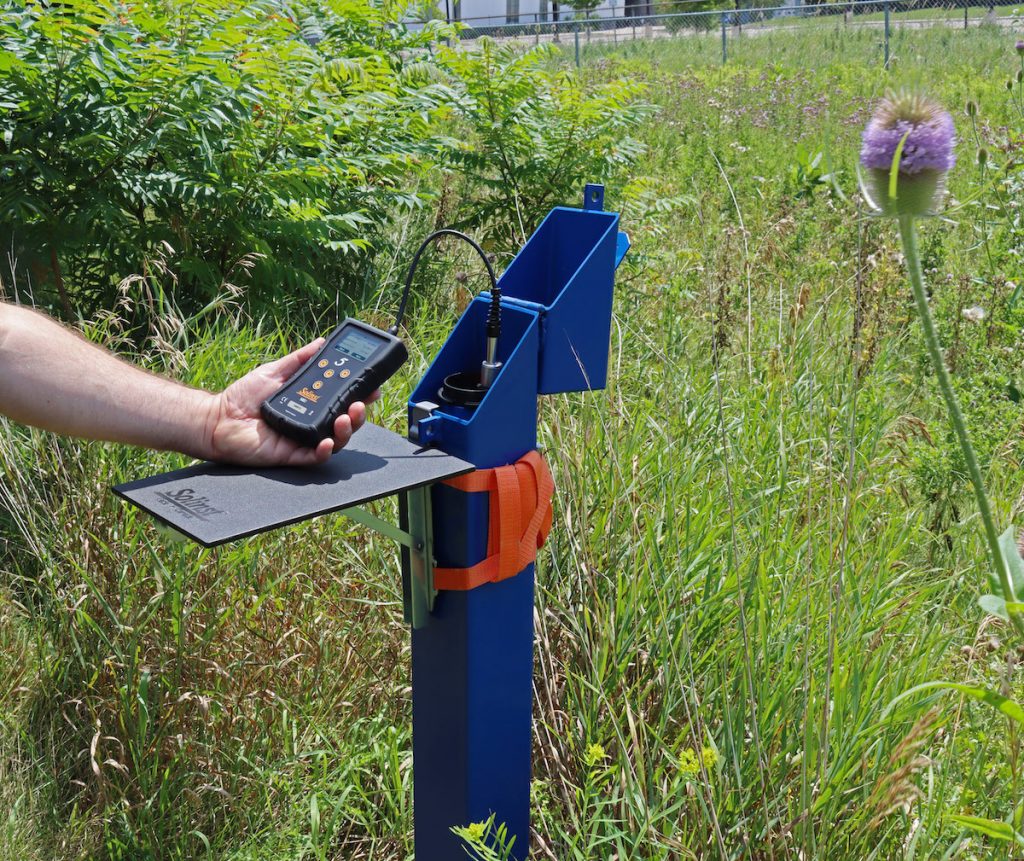
Viewing Barometrically Compensated Water Level Data Using a Solinst Readout Unit (SRU)
The SRU also provides the option to download and save data from the connected datalogger’s internal logging session. Downloading the data does not stop the datalogger from recording, and the memory is not erased. Data files can be transferred to a PC and opened using Levelogger Software.
There isn’t the option to stop, reprogram, or restart the connected datalogger, but you can view the status of the datalogger, including battery level, memory, firmware version, and logging mode.
The SRU’s ability to provide barometrically compensated real-time logging is ideal for collecting aquifer test data during pumping and slug tests.
But, you want something even more simple?
4. Using the DataGrabber 5 Data Transfer Device
The DataGrabber 5 is the simplest method when all you want to do is download your data. It is also the most compact – it’s small enough to fit in your pocket. (It’s also very affordable.)
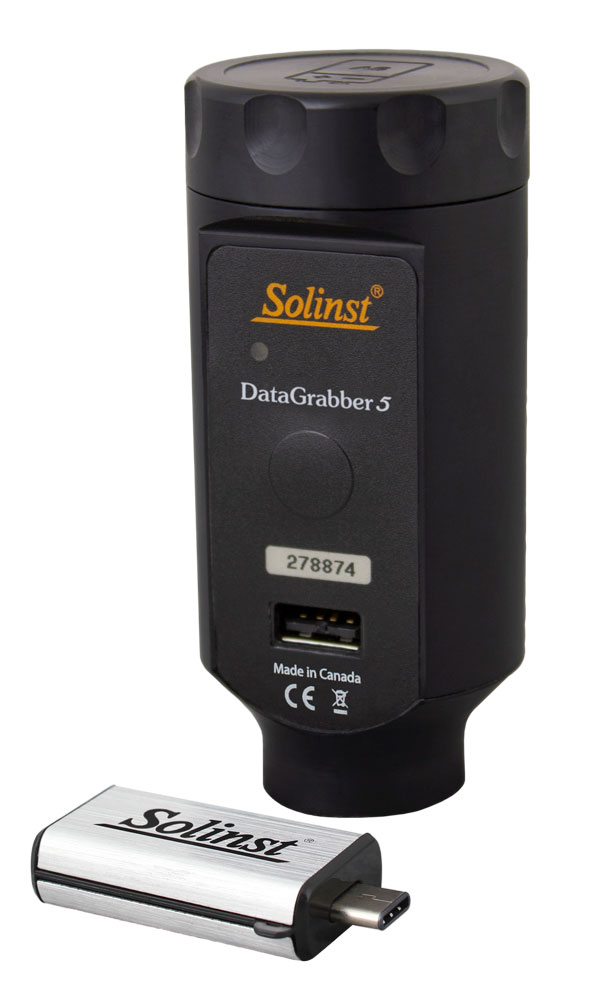
The DataGrabber 5 Transfers Levelogger Data to a USB Memory Stick.
The DataGrabber 5 uses a USB memory stick to store your Levelogger data files. Like the Solinst Levelogger App, the DataGrabber connects to your Levelogger via a Direct Read Cable or an Optical Adaptor. It connects directly to a LevelVent Wellhead.
Note: The Levelogger 5 App Interface and DataGrabber 5 look very similar, and are physically connected to your Levelogger in the same manner, but they function very differently!
The USB memory stick is inserted into the socket in the DataGrabber. With one push of the button, all of the data in the datalogger’s memory is transferred to the USB stick – you can’t get much simpler than that.
The DataGrabber 5 does not stop or interrupt the Levelogger from recording, and the memory is not erased. It simply copies the data to the USB memory stick. Take that memory stick back to the office and download it to your PC for use in Levelogger Software.
There are no programming or other data viewing features, and you can’t check the Levelogger’s memory or battery voltage – but that means you never have to worry about updating an app.
The Best Option for You
Whether you are looking to reprogram your dataloggers while out in the field, want to email data to your colleagues while on site, view barometrically compensated data, or simply just need to download your water level data, we have the best option for you. Check out our very helpful Levelogger Deployment and Communication Guide to get more details.
Note: Solinst also has telemetry options for collecting data remotely using cellular or radio communication, so you receive real-time data without having to go to the field.
The Bluetooth® word mark and logos are registered trademarks owned by Bluetooth SIG, Inc. and any use of such marks by Solinst Canada Ltd. is under license.
Apple is a trademark of Apple Inc., registered in the U.S. and other countries.
Android is a trademark of Google Inc.
